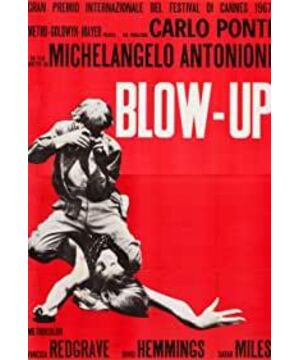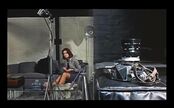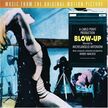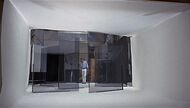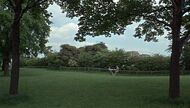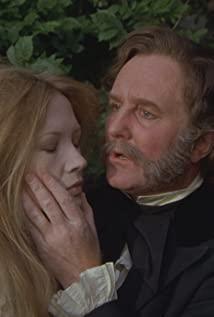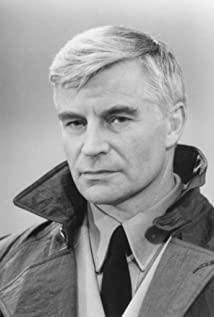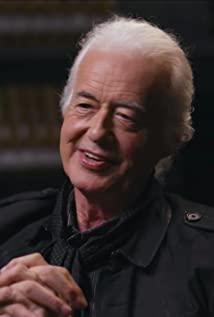Director Michelangelo Antonioni still continued his personal style full of philosophical thinking in this film, exploring the reality and illusion of the world, the love and desire between human beings. In the film "Zoom In", the director depicts the social landscape of London in the 1960s by presenting the photographer's experience, revealing the phenomenon that people were living in absurd reality and indulging in their own world at that time.
1. Themes
"Zoom" is actually a work that faced a turning point in Antonioni's creation. Compared with the previous "Eclipse" and "Adventure", the director has largely weakened the consistent exploration of the theme of alienation between people. The background of the film is London in the 1960s. The photographer Thomas mixed into the shelter in order to get the real image material. On the other hand, he was a god-like existence in his own studio. The film quietly portrays an empty figure by explaining Thomas's habit of dealing with people. When he gradually enlarges the photo of the park, it is a symbol of gradually getting lost in his own world. Until the photographer in the final picture of the film suddenly disappears in the middle of the grass, the director makes the audience fall into the contradiction between reality and illusion. On the other hand, Thomas' interaction with the people around him in the process of enlarging the photo also shows that society is also in absurdity. The two girls who would do anything to become models, the boss who only cares about publishing, the wife of a friend who has a secret affection for the photographer, the woman in the park who doesn't know if it really exists, the disappearing corpse, etc., all show the nothingness of the world. At the end of the film, the photographer joined the absurd tennis game of young people and chose to get lost, so they lived in the illusion like them. This is a compromise between individuals and society.
In addition, the director also expressed his distrust of technology and tools. The camera, as the most important invention of that era, allows people to record the occurrence of events, but cannot record the reality of the world. When Thomas was found secretly photographing by a woman, the woman could ask for the film to keep her identity secret, but when Thomas was about to take a photo of the body, the body disappeared. As an excellent user of advanced technology and tools, Thomas hoped to rely on cameras, film and other tools to explore the truth, but in vain. Although technology and tools can help human beings to make a profound exploration of the world, they cannot guarantee the authenticity of the world.
2. Camera scheduling
In this film, there are three camera perspectives for narration, namely the director's perspective, the protagonist's perspective, and the protagonist's camera perspective. The film as a whole is based on the director's perspective, and relatively objectively tells the working and life experience of photographer Thomas. Therefore, such lenses present a sense of objectivity and realism visually. For example, they often use long-range shots to show the environmental state of the characters, panorama to show the relationship between the characters and the environment, and use long shots to fully present the characters' actions and development trends. It is precisely because of this sense of objectivity and reality that the film has a realistic tone. The protagonist's point of view often appears in its subjective lens. For example, when Thomas was taking a candid photo in the park, the camera panned left and right by imitating human eyes, so that the audience would be immersed in the story from the protagonist's point of view. The final reversal sets the stage. The protagonist's camera is also an independent point of view. The photos printed by the protagonist in the film are the embodiment of this perspective, and its role is to help the protagonist to record the world and explore the world, such as capturing the process of murder. The camera is a tool and a way for the protagonist to explore the world, so its role cannot be underestimated.
The many perspectives and panoramas in this film show the relationship between people and the environment at that time, which is a display of the authenticity of the world. The buildings or vegetation in the panorama reveal a lonely and desolate atmosphere, reflecting the morbid social state and leading the audience to think about the relationship between people and society.
In the lens design, the director combines scene composition changes with lens movement, and the panning and zooming everywhere in the film is the feature of the film. Taking the scene of Thomas discovering the hidden characters in the photo as an example, the camera starts from the object on the coffee table, pans the camera with the hand in Thomas' painting as the follow-up point, starts from the close-up of the object and sweeps over Thomas's legs and legs from bottom to top. The waist, the final fall is a single medium shot. When Thomas discovered the secret in the photo, the camera moved quickly into a close-up view of the foreground of the character and the background of the photo. This camera movement emphasized the center of the plot and achieved a clear narrative purpose.
3. Fine Arts
The art aspect of the film uniformly presents a boring atmosphere of life. Even if red and green appear on the black, white, and gray-based picture, it will appear with low saturation and low brightness. An image world full of nihilism built by achromatic images, people in this world are unaware of the world they are in. The occasional warm color embellishment in the achromatic world is like the surging lust of human beings. People can only rely on sexual desire to find comfort in their boring life. The costumes and makeup of the characters in the film show the social image of various groups at that time. The romantic children represented by photographers often unbutton their shirts to reveal their chests to express their needs for sex, and there are selfish people represented by publishers. Dressed in suits and stereotyped, strange people, represented by young people, look like aliens in strange clothes. The emptiness and emptiness of life are reflected everywhere.
4. Metaphors
The behaviors and actions of the characters in the film are full of metaphors. For example, when the photographer takes a picture of his friend's wife, the camera in his hand represents the male organ, and the positional relationship between the photographer and his friend's wife also symbolizes the matter of men's and women's beds. The photographer's attitude towards the model when taking pictures of the model is actually a manifestation of the objectification of the model. The photographer regards the model as an inanimate body at the mercy of others, and the fake smiles of the models also show the hypocrisy of the world. Another example is that the trees outside the window that often appear represent the inner state of the characters, and the shaking of the trees represents the inner tension of the characters, showing the relationship between the characters with a sense of distance. In addition, props and furnishings also hint at the theme of the film. For example, the row of camels on the wall of the photographer's studio symbolizes that life is a journey in the desert, dazed and long without purpose.
5 Conclusion
With his unique philosophical insights, Antonioni discusses "being and nothingness" by means of images, and finally leaves the puzzle to the audience with an open ending. Whether in London in the 1960s or in today's society, there are discussions of real and unreal issues. The issues of life and philosophy need to be explored by human beings all the time.
View more about Blow-Up reviews


